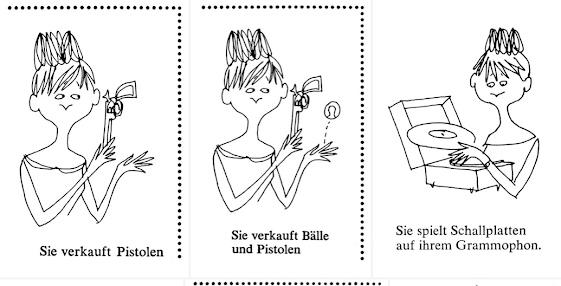I. Forensic Art Certification Scope and Role
The field of forensic art includes three main disciplines. They are composite art, image modification/age progression, and post mortem reconstruction. The forensic artist is a multi skilled professional. Though drawing and/or interviewing skills are paramount, there is other knowledge required as well. The forensic artist should also have an understanding of victim psychology, facial anatomy, human memory, aging trends and digital imagery.
The field of forensic art relays heavily on artistic abilities. It is the art that gives the forensic artist the potential to help an investigation when forensic science can not. Though scientific concepts relating to facial anatomy and memory are implemented during the performance of this field, the primary tool is drawing or sculpting. Because of this, there is an underlining artistic skill set required for all three forensic art disciplines. An applicant applying for IAI forensic art certification must demonstrate this required artistic ability. The artist that has achieved this professional skill set can declare on the certification application an emphasis in any one or a combination of any of the three disciplines in the field forensic art. This will be directly related to the applicant’s previous training and case experience. Once an artist has been certified, their artistic skills have been acknowledged. After which, their continuing forensic art training and case experience in all the three forensic art disciplines can be documented and acknowledged in the recertification program.
II. Basic Definitions
Forensic Art
Forensic art is the artistic technique used in the identification, apprehension or conviction of a wanted person. This person may not necessarily be a criminal, but could be a missing person or an unidentified deceased person. These forensic images can be admissible in a court of law.
The three main disciplines in the field of forensic art:
Composite Art or Imagery
The technique of creating a sketch of an unknown subject from individually described parts into a single graphic image. It is intended to be a likeness or similarity of a victim’s or witness’s perception of the subject at the time the subject was seen.
Postmortem or Facial Reconstruction
This involves the rebuilding of facial features of unidentified badly decomposed or skeletal human remains. These images are created digitally, by sketching or three-dimensionally with clay. They are used for identification. Additionally postmortem drawings are also reconstruction images. These are the facial drawings created by viewing photographs or the remains themselves of an unknown deceased person. In these cases the bodies are relatively intact and not as decomposed. These drawings are used for identification.
Image Modification or Enhancement
This is the alteration or enhancement of a photograph or image of a person for the purpose of updating, clarifying or identifying a subject. Age progressions and age regressions are image modifications. These images can be drawn or done as digital images.
III. Certification Requirement
The artist applicant is required to meet the listed qualification for forensic art certification. They must submit the completed certification application and present a portfolio that illustrates their emphasized discipline(s). The certification board will review this application and portfolio to determine if the applicant’s declared expertise is demonstrated. Once the certification board has approved the applicant’s application and portfolio, the applicant will be required to pass a written and practical test.
The artist successfully completing the application and test procedure will be granted forensic art certification. This certification insures the applicant’s artistic skills and general forensic art knowledge. The artist would have shown the expertise in at least one of the forensic art disciplines and the artistic ability to perform in the remaining disciplines. However, additional training and study may be required by a certified artist to further their education and skill sets in their non-emphasized discipline. These artists will use the recertification program to be acknowledged for their continued education and experience.
IV. Certified Forensic Artist
Composite Art or Imagery
The certified forensic artist has demonstrated the skill sets to conduct a composite session with a victim or witness for the purpose of creating a composite sketch of an unknown subject. A composite session requires the ability to draw and interview.
Postmortem or Facial Reconstruction
The certified forensic artist has demonstrated the skill sets and understanding of facial anatomy to create a post mortem drawing of a relatively intact unidentified DOA. In addition, the certified forensic artist, with the emphasis on facial reconstruction, has demonstrated the skill set for creating a facial reconstruction from a skull with the input of a forensic anthropologist or medical examiners report. These artists are only certified to create a reconstruction from a skull in the technique he or she has demonstrated in their IAI certification board approved portfolio.
Image Modification or Enhancement
The certified forensic artist has demonstrated the skill sets and understanding of facial anatomy to create an age progression, modification or enhancement of a photograph or digital image of a person. The artist is only certified to create a modified image in the technique he or she has demonstrated in their IAI certification board approved portfolio.
V. Additional Information
The skill set required of an artist compared to a technician or scientist is different. The black and white world of science is in direct contrast to the gray world of art. Though the measure of professional level artistic abilities can be determined, there is individuality to each artist’s technique. This results in an artistic interpretive element to all forensic art methods. It is because of this that the individual artist is responsible to self assess their own abilities. For most first time certified artists, additional training will be required. This will help maintain quality images in the field of forensic art.
It should also be acknowledge that many forensic artists achieve extensive experience with the human face. These experienced certified artists can offer helpful opinions based on an analysis of a comparison between multiple facial images. This is for determining the possibility that the images may be or may not be the same individual. In most cases, facial image comparisons will not yield definitive results. A degree of possibility is the norm as related to a positive identification; however, as an exclusionary tool, this opinion comparison may yield more definitive results.
https://en.wikipedia.org/wiki/Forensic_arts
https://www.michigan.gov/msp/0,4643,7-123-3493_22454-59999--,00.html
http://forensicfaces.weebly.com/what-is-forensic-art.html
#FB00841



































































